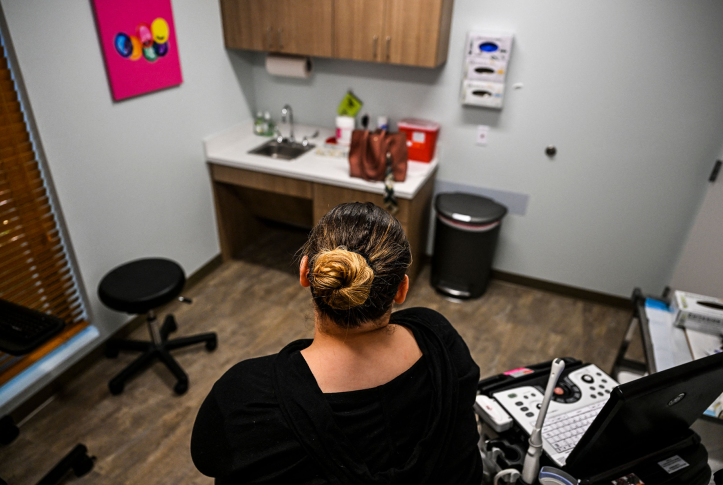Earlier this year, the U.S. Supreme Court overturned the Roe decision upholding the constitutional right to abortion. States have been quick to act — about half are implementing laws to outlaw or limit abortion. However, federal law trumps state law: the Emergency Medical Treatment and Labor Act (EMTALA), passed in 1986 to prevent hospitals from refusing to treat patients who arrive in emergency situations, requires Medicare-participating hospitals with emergency departments (EDs) to screen and stabilize people experiencing health care crises. In late August, two separate lawsuits reached contrasting results regarding the interaction between EMTALA and state abortion laws.
EMTALA Guidance
Under EMTALA, hospitals must screen individuals who come to EDs to determine if an emergency medical condition exists. That is, if withholding immediate care would place the health of the individual (or, in the case of a pregnant woman, her unborn child) in “serious jeopardy,” result in “serious impairment to bodily function,” or cause “serious dysfunction” to an organ or body part. If so, the hospital must then stabilize the patient to assure that the condition will not materially deteriorate.
The Supreme Court’s Dobbs decision presents professionals with a profound dilemma — what to do when the patient’s health and federal law calls for an emergency abortion that is prohibited by state law. The U.S. Department of Health and Human Services (HHS) issued guidance and a letter clarifying the obligation of health care providers in pregnancy emergencies to stabilize the condition of the mother, including inducing or performing an abortion if necessary. The guidance states:
“An emergency medical condition may include a condition that is likely or certain to become emergent without stabilizing treatment . . . [including] ectopic pregnancy, complications of pregnancy loss, or emergent hypertensive disorders, such as preeclampsia with severe features. When a state law . . . [draws an exception to an abortion prohibition] more narrowly than EMTALA’s emergency medical condition definition — that state law is preempted.”
EMTALA expressly takes precedence over state laws that directly conflict with it. Nevertheless, Texas, joined by two antiabortion medical associations, sued HHS, claiming that the guidance would require abortions prohibited by Texas law. In a separate case, the federal government sued Idaho, asserting that Idaho law prohibited providers from performing abortions even when abortion stabilizes an emergency medical condition, as required by EMTALA.
The Texas Case
Texas’s law prohibits abortion except where necessary to address a “life-threatening physical condition” that places the female at risk of death “or a serious risk of substantial impairment of a major bodily function.” The person who performs the abortion must “provide the best opportunity for the unborn child to survive” unless doing so would increase the risk to the mother.
Federal judge James Wesley Hendrix entered a preliminary injunction blocking the enforcement of the EMTALA guidance in Texas or against members of the medical groups that had sued. He said the guidance went “. . . well beyond EMTALA’s text, which protects both mothers and unborn children, is silent as to abortion, and preempts state law only when the two directly conflict.”
In ruling for Texas, Judge Hendrix stated repeatedly that the guidance:
“. . . directly conflicts with the doctor’s ongoing duty to provide care for both the mother and the unborn child when stabilizing a pregnant woman. . . . EMTALA does not say how to balance both interests. It leaves that determination to the doctor, who is bound by state law.”
He also held that the issuing of the guidance violated federal administrative law requirements because neither the state nor the medical groups had been given the opportunity to comment before adoption.
The Idaho Case
Federal Judge B. Lynn Winmill heard the federal challenge to Idaho’s law, which criminalizes all abortions. A physician is allowed a defense if the abortion was “necessary to prevent the death of the pregnant woman,” but not if it was necessary to prevent serious harm. Moreover, physicians must wait until death is imminent or certain before aborting, even if death is probable or the patient is suffering severe pain and risks potentially disabling injuries. A physician is effectively compelled to either comply with the Idaho law or EMTALA. Judge Winmill held the Constitution’s Supremacy Clause dictates that physicians comply with EMTALA.
Much of the decision focuses on physician affidavits, which graphically described the dilemma Idaho’s “total ban” imposes on physicians. Judge Winmill also noted the harm enforcement of the law would cause to patients, who have “the greatest stake in the outcome of this case.” He enjoined enforcement of the Idaho law insofar as it applies to medical care required by EMTALA, although it otherwise remains in effect.
The Future of State Abortion Laws and EMTALA
These cases address different issues: the Texas case enjoined the enforcement against the plaintiffs of an administrative interpretation of EMTALA while the Idaho case enjoined a state statute that conflicts with EMTALA. They also represent radically different perspectives. In Idaho, Judge Winmill focused on the stark realities of abortion bans and the dangers they impose on pregnant women and medical providers. Judge Hendrix in Texas was primarily focused on the “unborn child,” whom he sees as having equal rights under EMTALA.
Neither decision has yet been appealed, but the conflict between EMTALA and state abortion law may end up before the Supreme Court. In the interim, HHS has threatened to sue other states with laws that conflict with EMTALA and to sanction providers who do not allow EMTALA-required abortions. For now, in some states a woman puts her life or health at risk by becoming pregnant.




